-
 Bitcoin
Bitcoin $83,818.1285
1.19% -
 Ethereum
Ethereum $1,813.8273
1.27% -
 Tether USDt
Tether USDt $0.9997
-0.01% -
 XRP
XRP $2.1250
3.48% -
 BNB
BNB $596.7493
0.64% -
 Solana
Solana $121.2008
5.27% -
 USDC
USDC $1.0000
0.01% -
 Dogecoin
Dogecoin $0.1698
4.33% -
 Cardano
Cardano $0.6591
1.51% -
 TRON
TRON $0.2375
-0.84% -
 UNUS SED LEO
UNUS SED LEO $9.1951
-4.76% -
 Chainlink
Chainlink $12.8892
1.68% -
 Toncoin
Toncoin $3.3131
-5.81% -
 Stellar
Stellar $0.2583
-0.21% -
 Avalanche
Avalanche $18.1653
0.47% -
 Sui
Sui $2.2414
3.02% -
 Shiba Inu
Shiba Inu $0.0...01231
1.76% -
 Hedera
Hedera $0.1635
1.61% -
 Litecoin
Litecoin $84.7103
1.75% -
 Polkadot
Polkadot $4.0184
0.11% -
 MANTRA
MANTRA $6.2827
-1.26% -
 Bitcoin Cash
Bitcoin Cash $300.9919
-0.81% -
 Bitget Token
Bitget Token $4.5306
1.27% -
 Dai
Dai $1.0000
-0.01% -
 Ethena USDe
Ethena USDe $0.9991
-0.04% -
 Monero
Monero $217.9472
1.03% -
 Hyperliquid
Hyperliquid $11.9562
2.18% -
 Uniswap
Uniswap $5.8865
0.68% -
 Pepe
Pepe $0.0...07249
7.38% -
 OKB
OKB $50.7987
8.70%
How to set up stop-loss and take-profit on Bitget
Setting up stop-loss and take-profit orders on Bitget automates risk management and profit-taking, essential for trading in the volatile crypto market.
Apr 04, 2025 at 06:22 am
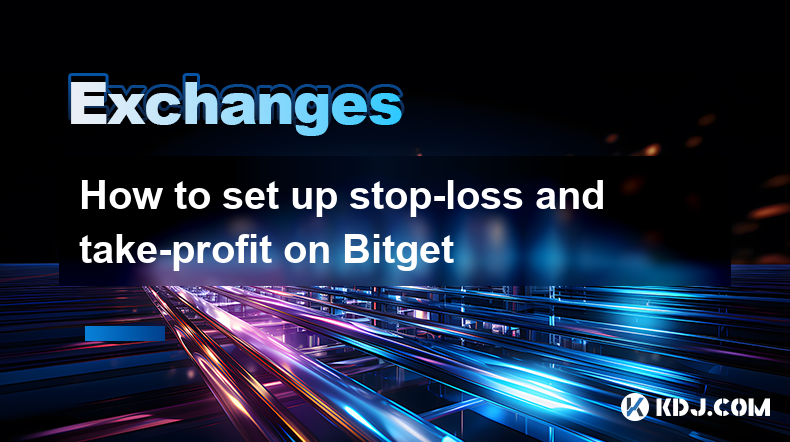
Setting up stop-loss and take-profit orders on Bitget can significantly enhance your trading strategy by automating risk management and profit-taking. These tools are essential for traders looking to minimize losses and secure gains in the volatile cryptocurrency market. This article will guide you through the process of setting up these orders on Bitget, ensuring you understand each step and can apply it effectively in your trading activities.
Understanding Stop-Loss and Take-Profit Orders
Before diving into the setup process, it's important to understand what stop-loss and take-profit orders are. A stop-loss order is designed to limit an investor's loss on a position in a security. It triggers a sell order when the price of the asset falls to a certain level. Conversely, a take-profit order is used to lock in profits by selling the asset when it reaches a predetermined price level. Both types of orders help automate trading decisions, reducing the need for constant market monitoring.
Accessing the Trading Interface on Bitget
To set up stop-loss and take-profit orders on Bitget, you first need to access the trading interface. Here’s how you can do it:
- Log into your Bitget account.
- Navigate to the trading section by clicking on the "Trade" tab at the top of the page.
- Select the cryptocurrency pair you wish to trade. For instance, if you want to trade Bitcoin against USDT, select the BTC/USDT pair.
Once you are in the trading interface, you will see various options for placing orders, including market orders, limit orders, and the options for stop-loss and take-profit.
Setting Up a Stop-Loss Order on Bitget
To set up a stop-loss order on Bitget, follow these steps:
- In the trading interface, locate the "Order" section.
- Click on the "Stop-Limit" option.
- In the "Trigger Price" field, enter the price at which you want the stop-loss order to be triggered. This is the price at which the market must reach for your stop-loss to activate.
- In the "Price" field, enter the price at which you want the order to execute once the trigger price is reached. This should be slightly lower than the trigger price to ensure the order is filled.
- Enter the amount of cryptocurrency you wish to sell in the "Amount" field.
- Review your order details and click "Submit" to place the stop-loss order.
Setting Up a Take-Profit Order on Bitget
Setting up a take-profit order is similar to setting up a stop-loss order. Here’s how you can do it:
- In the "Order" section of the trading interface, select the "Stop-Limit" option.
- In the "Trigger Price" field, enter the price at which you want the take-profit order to be triggered. This is the price at which the market must reach for your take-profit to activate.
- In the "Price" field, enter the price at which you want the order to execute once the trigger price is reached. This should be slightly higher than the trigger price to ensure the order is filled.
- Enter the amount of cryptocurrency you wish to sell in the "Amount" field.
- Review your order details and click "Submit" to place the take-profit order.
Monitoring and Adjusting Your Orders
Once your stop-loss and take-profit orders are set, it’s important to monitor them and make adjustments as needed. Market conditions can change rapidly, and you may need to adjust your trigger prices or the amounts to better align with your trading strategy. Here are some tips for monitoring and adjusting your orders:
- Regularly check the market conditions and the performance of your cryptocurrency pair.
- If the market is moving in your favor, consider adjusting your take-profit order to lock in more profits.
- If the market is moving against you, consider adjusting your stop-loss order to minimize potential losses.
- Use the Bitget mobile app or desktop platform to keep an eye on your orders and make quick adjustments as needed.
Common Mistakes to Avoid
When setting up stop-loss and take-profit orders, there are several common mistakes that traders should avoid:
- Setting stop-loss orders too tight, which can result in the order being triggered by normal market volatility rather than a significant price movement.
- Setting take-profit orders too far away, which can result in missing out on potential profits if the market reverses before reaching the target.
- Not adjusting orders in response to changing market conditions, which can lead to missed opportunities or increased losses.
- Over-relying on automated orders without considering the broader market context, which can lead to suboptimal trading decisions.
Advanced Strategies for Using Stop-Loss and Take-Profit Orders
For more experienced traders, there are advanced strategies that can be employed to enhance the effectiveness of stop-loss and take-profit orders:
- Trailing Stop-Loss: This type of stop-loss order adjusts automatically as the price of the asset moves in your favor. It allows you to lock in profits while still giving the asset room to grow.
- Multiple Take-Profit Levels: Instead of setting a single take-profit order, you can set multiple orders at different price levels to capture profits at various stages of a price movement.
- Combining with Technical Analysis: Use technical indicators and chart patterns to determine optimal levels for your stop-loss and take-profit orders, increasing the likelihood of successful trades.
Practical Example of Setting Up Orders
Let’s walk through a practical example of setting up stop-loss and take-profit orders on Bitget for a hypothetical trade in the BTC/USDT pair:
- You buy 1 BTC at a price of $30,000.
- You want to limit your potential loss to 5%, so you set a stop-loss order with a trigger price of $28,500 and an execution price of $28,400.
- You aim to take profits at a 10% gain, so you set a take-profit order with a trigger price of $33,000 and an execution price of $33,100.
By setting these orders, you ensure that your trade is protected against significant losses and that you can automatically secure profits if the market moves in your favor.
The Importance of Risk Management
Effective use of stop-loss and take-profit orders is a key component of risk management in cryptocurrency trading. By automating your exit points, you can reduce the emotional impact of trading decisions and stick to your trading plan more consistently. Here are some additional tips for managing risk:
- Never risk more than you can afford to lose on a single trade.
- Diversify your portfolio to spread risk across different assets.
- Continuously educate yourself on market trends and trading strategies to improve your decision-making process.
FAQs
Q: What is a stop-loss order on Bitget?
A: A stop-loss order on Bitget is an order type that automatically sells your cryptocurrency when its price falls to a specified level, helping to limit potential losses.
Q: How do I set up a take-profit order on Bitget?
A: To set up a take-profit order on Bitget, go to the trading interface, select the "Stop-Limit" option, enter the trigger price and execution price, specify the amount, and submit the order.
Q: Can I adjust my stop-loss and take-profit orders after they are set?
A: Yes, you can adjust your stop-loss and take-profit orders on Bitget at any time by accessing the trading interface and modifying the order details.
Q: What is the difference between a stop-loss and a take-profit order?
A: A stop-loss order is used to limit losses by selling an asset when its price falls to a certain level, while a take-profit order is used to lock in profits by selling an asset when its price reaches a predetermined level.
Q: Are stop-loss and take-profit orders guaranteed to execute at the specified prices?
A: No, stop-loss and take-profit orders are not guaranteed to execute at the specified prices, especially in highly volatile markets where prices can move rapidly.
Disclaimer:info@kdj.com
The information provided is not trading advice. kdj.com does not assume any responsibility for any investments made based on the information provided in this article. Cryptocurrencies are highly volatile and it is highly recommended that you invest with caution after thorough research!
If you believe that the content used on this website infringes your copyright, please contact us immediately (info@kdj.com) and we will delete it promptly.
- Forget Shiba Inu (SHIB), RUVI AI is the New Meme Coin Championing Innovation
- 2025-04-05 12:20:12
- RUVI AI Emerges as a Leading Contender, Promising to Tackle the Challenges of the Current Crypto Landscape
- 2025-04-05 12:20:12
- Avalanche (AVAX) Experienced a Notable Stablecoin Supply Surge, But Passive On-chain Use May Be Limiting Demand
- 2025-04-05 12:15:12
- Particularly for Dogecoin (DOGE), Elon Musk, the billionaire entrepreneur CEO of Tesla and SpaceX, has been among the most influential players in the bitcoin scene.
- 2025-04-05 12:15:12
- Circle, the issuer of USDC, formally filed for an Initial Public Offering (IPO)
- 2025-04-05 12:10:11
- “Michael Saylor's New Bitcoin-Centric Fundraising Vision: 1% of the $300 Trillion Fixed Income Market”
- 2025-04-05 12:10:11
Related knowledge

What are the contract margin modes of HTX?
Apr 04,2025 at 02:14pm
HTX, formerly known as Huobi, offers various contract margin modes to cater to the diverse needs of traders. Understanding these modes is crucial for effectively managing risk and maximizing potential returns. In this article, we will delve into the different contract margin modes available on HTX, explaining their features, benefits, and how to use the...
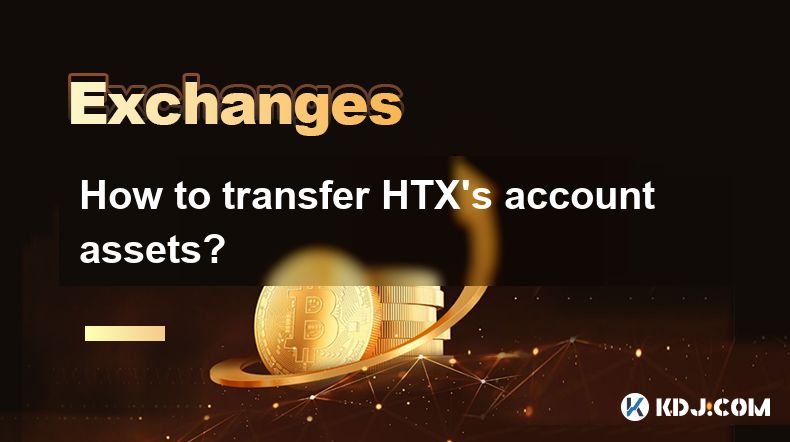
How to transfer HTX's account assets?
Apr 04,2025 at 09:28pm
Introduction to HTX and Account AssetsHTX, formerly known as Huobi, is a leading cryptocurrency exchange that offers a wide range of trading services. One of the essential functions for users is the ability to transfer assets within their HTX accounts. Whether you're moving funds between different wallets or sending assets to another user, understanding...
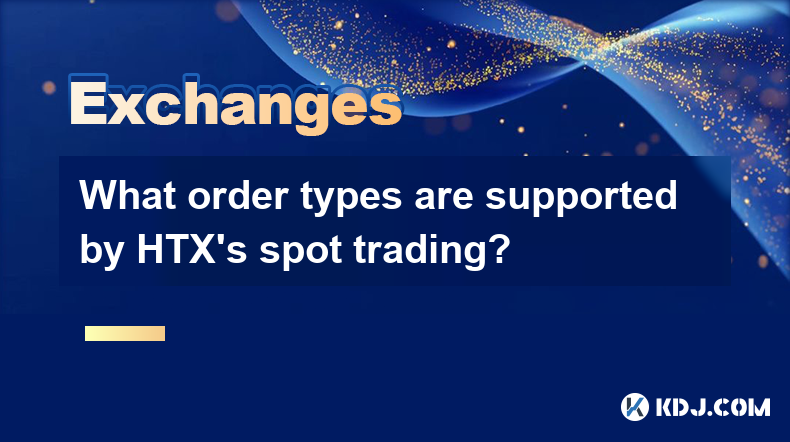
What order types are supported by HTX's spot trading?
Apr 04,2025 at 04:42am
HTX, formerly known as Huobi, is a well-established cryptocurrency exchange that offers a variety of order types for spot trading. Understanding these order types is crucial for traders looking to execute their strategies effectively. In this article, we will explore the different order types supported by HTX's spot trading platform, providing detailed ...

How to cancel HTX's stop-profit and stop-loss orders?
Apr 03,2025 at 07:50pm
Introduction to HTX's Stop-Profit and Stop-Loss OrdersHTX, formerly known as Huobi, is a leading cryptocurrency exchange that offers a variety of trading tools to its users. Among these tools are stop-profit and stop-loss orders, which are essential for managing risk and securing profits in the volatile crypto market. These orders allow traders to set p...
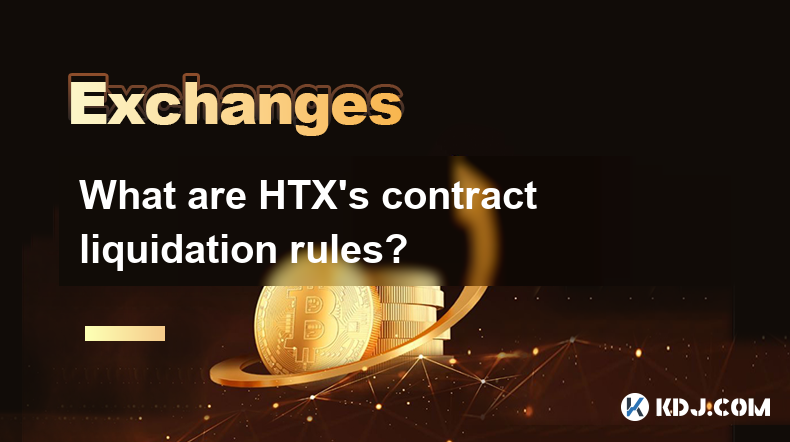
What are HTX's contract liquidation rules?
Apr 04,2025 at 10:08am
Introduction to HTX's Contract LiquidationsHTX, formerly known as Huobi, is a prominent cryptocurrency exchange known for its diverse range of trading products, including futures and options contracts. One of the critical aspects of trading on HTX is understanding the rules surrounding contract liquidations. Liquidation occurs when a trader's position i...
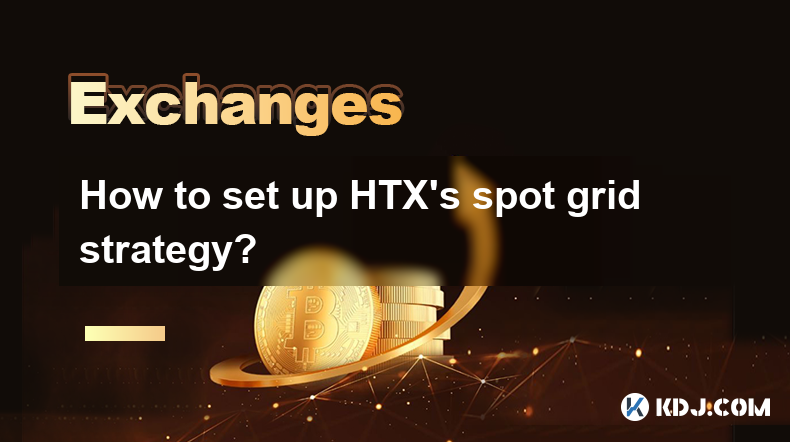
How to set up HTX's spot grid strategy?
Apr 05,2025 at 12:35am
Setting up HTX's spot grid strategy involves a series of steps that allow traders to automate their trading activities based on predefined parameters. This strategy is particularly useful for those looking to capitalize on the volatility of the cryptocurrency market without constantly monitoring their trades. In this article, we will walk you through th...

What are the contract margin modes of HTX?
Apr 04,2025 at 02:14pm
HTX, formerly known as Huobi, offers various contract margin modes to cater to the diverse needs of traders. Understanding these modes is crucial for effectively managing risk and maximizing potential returns. In this article, we will delve into the different contract margin modes available on HTX, explaining their features, benefits, and how to use the...

How to transfer HTX's account assets?
Apr 04,2025 at 09:28pm
Introduction to HTX and Account AssetsHTX, formerly known as Huobi, is a leading cryptocurrency exchange that offers a wide range of trading services. One of the essential functions for users is the ability to transfer assets within their HTX accounts. Whether you're moving funds between different wallets or sending assets to another user, understanding...

What order types are supported by HTX's spot trading?
Apr 04,2025 at 04:42am
HTX, formerly known as Huobi, is a well-established cryptocurrency exchange that offers a variety of order types for spot trading. Understanding these order types is crucial for traders looking to execute their strategies effectively. In this article, we will explore the different order types supported by HTX's spot trading platform, providing detailed ...

How to cancel HTX's stop-profit and stop-loss orders?
Apr 03,2025 at 07:50pm
Introduction to HTX's Stop-Profit and Stop-Loss OrdersHTX, formerly known as Huobi, is a leading cryptocurrency exchange that offers a variety of trading tools to its users. Among these tools are stop-profit and stop-loss orders, which are essential for managing risk and securing profits in the volatile crypto market. These orders allow traders to set p...

What are HTX's contract liquidation rules?
Apr 04,2025 at 10:08am
Introduction to HTX's Contract LiquidationsHTX, formerly known as Huobi, is a prominent cryptocurrency exchange known for its diverse range of trading products, including futures and options contracts. One of the critical aspects of trading on HTX is understanding the rules surrounding contract liquidations. Liquidation occurs when a trader's position i...

How to set up HTX's spot grid strategy?
Apr 05,2025 at 12:35am
Setting up HTX's spot grid strategy involves a series of steps that allow traders to automate their trading activities based on predefined parameters. This strategy is particularly useful for those looking to capitalize on the volatility of the cryptocurrency market without constantly monitoring their trades. In this article, we will walk you through th...
See all articles





















































































